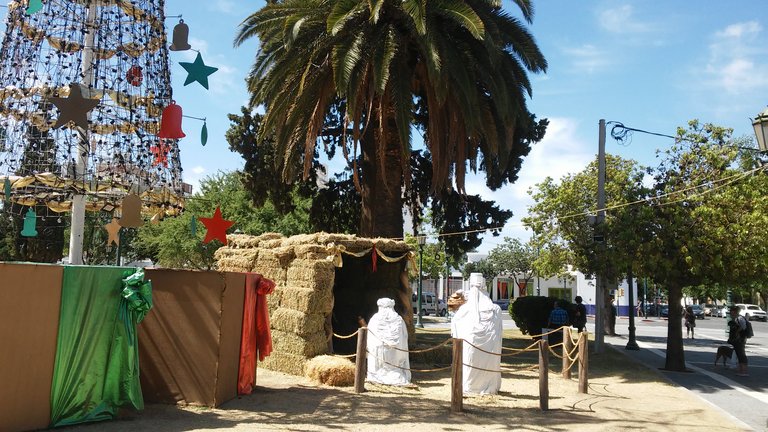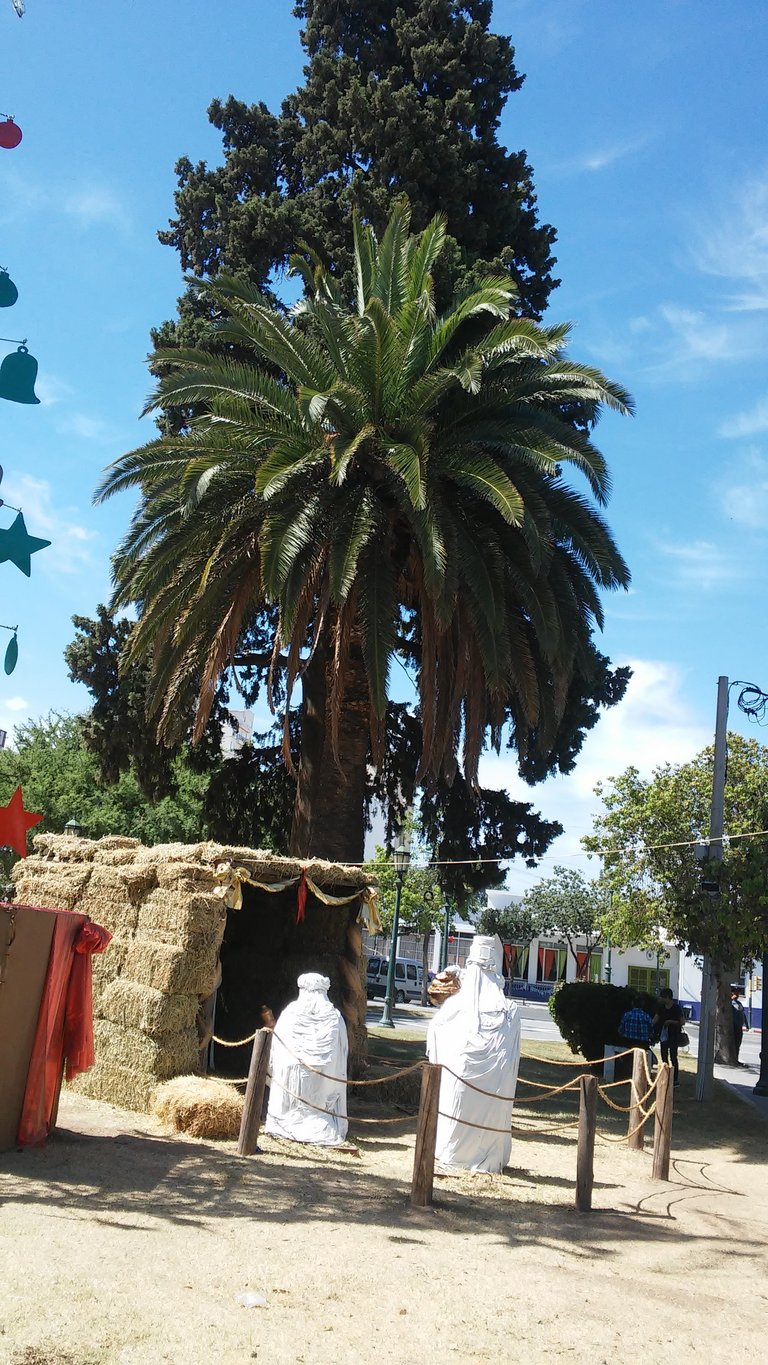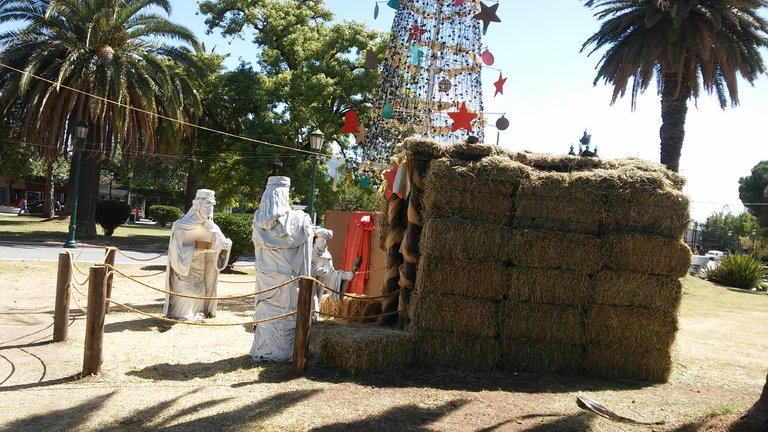
We are passing through the Christmas atmosphere that surrounds the end of the year celebrations and it is normal to start seeing Christmas decorations and mangers of different types and assembled according to the different latitudes.

A few days ago I had the opportunity to see a very particular nativity scene. Not because it did not reflect the Christian allegory and the immutable principles that have been transmitted from generation to generation from centuries to centuries until reaching from antiquity to our days.

I was surprised because it is one of the most austere nativity scenes I have ever seen and, leaving aside the strictly religious aspect, it perfectly communicates the sense of humility (or poverty in the good sense of the word) that should be transmitted to us by the Holy Scriptures. And that we do not always see in churches and cathedrals.
On one side of the square and under the shade of a huge pine tree the manger has been formed with huge square bales of grass, those that were used some years ago to feed cattle. The raw material is always the same, but nowadays the characteristic rectangular shape has disappeared to give way to round bales of grass.

These bales are used to feed livestock, especially cattle, during the harsh winter months, when green grass is scarce either as a result of the intense cold and/or low rainfall during the winter period.
But also the dry grass is an emblem of birth, in particular because it represents the birth of Jesus, the wise men who come to witness the event to which have been added all the other elements and characters that according to Christian tradition are part of the scene that represents.

But we must not forget that, in reality, the word manger has a rural meaning, since it means the place where animals eat, especially in those countries (for example Europe) where, due to their small size, animals spend most of their lives in stables, as opposed to the huge extensions of the Americas where animals roam freely throughout the plains.
But returning to the theme of the nativity scene, what struck me most was the austerity and simplicity. For example, the magi themselves, with life-size figures of a person, were not painted with any color, perhaps to signify that their human value was equal in all three without differentiating if one was white and the other black. The absolutely white color of each of the three gave an idea of uniformity, purity and simplicity truly worthy of note.

What I do not quite understand is the position that hides it from most of the visitors who pass through the opposite side of the square. Perhaps a more central exhibition would have given a greater highlight to this exquisite sobriety with which it has been assembled.
It only remains for me to wish all #hivers friends in general a serene Christmas and a start of the year that fulfills everyone's expectations at a personal and family level.

And may #HIVE, in particular, continue to be a meeting point for all, where we can freely and uncensored express our thoughts, our hobbies, our ambitions and our desires.
Happy holidays to all!

Source image initial (background): Freepik.